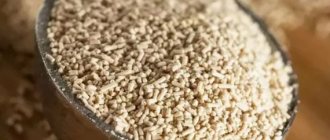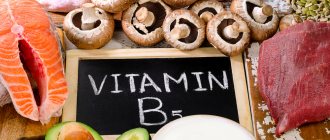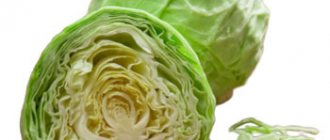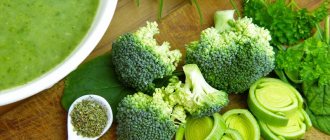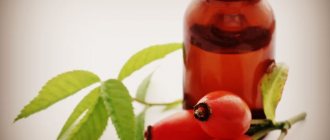Vitamins are needed to maintain the functioning of the body. Most of them are obtained from food. But sometimes you have to take additional supplements containing vitamins so that there is no deficiency. This happens during cold seasons or winter, when the body needs additional support. Vitamin preparations help support the body during difficult periods.
To drink or not to drink?
At first glance, a modern person should not lack vitamins - store shelves are full of a variety of foods, and vegetables and fruits can be eaten all year round, and not just in the summer.
But, unfortunately, even with a balanced diet, it is impossible to get all the necessary microelements and vitamins from food. For example, vegetables and fruits with modern methods of cultivation and transportation contain 2–3 times less vitamins than 10–20 years ago. In addition, by consuming large amounts of refined foods high in sugars and saturated fats, we reduce the absorption of even those vitamins that we get from food. Again, modern people, due to a sedentary lifestyle, often limit the caloric content of their diet, and this affects the amount of micronutrients received.
Article on the topic
Acne, cancer, death. How an overabundance of vitamins leads to oncology and strokes. City dwellers are especially in need of additional vitamin intake. This is also due to the fact that vitamins are involved in detoxification processes, and in urban conditions the toxic load on the body increases. Plus, do not forget that with certain diseases (for example, diabetes) vitamins and microelements are consumed in greater quantities. Therefore, the vast majority of us still need additional vitamins.
History of discovery
Ancient people noticed that certain foods could prevent diseases. The ancient Egyptians used liver to protect themselves from night blindness. The scientific works of Chinese scientists from 1330 speak of the importance of combining food products, and in 1747 in Scotland the healing effect of citrus fruits was discovered for scurvy.
The end of the 19th century brought the knowledge that proteins, fats, carbohydrates and mineral salts indicate nutritional value. At the same time, a Russian scientist named Lunin conducted experiments on mice that were fed artificial and natural milk.
Individuals of the first group died, and with natural feeding they noted a high level of health. This led to the conclusion that milk contains more than just casein, fats, sugar and salt. The composition includes other essential components. The scientific community was not ready at that time to accept the scientist’s conclusions.
It was only in 1911 that the crystalline substance was isolated by Casimir Funk, a Polish scientist. Thanks to the discovery, it became possible to treat beriberi disease (damage to brain tissue, myocardium), the symptoms of which were a deficiency of vitamin B1 in the human body. The substance was called the term “Vitamine”, where “vita” is translated from Latin as “life”, and “amine” is “organic compound” in English.
Do I need it?
The first signs of vitamin deficiency are very general: weakness, increased fatigue, uncontrolled eating (the body tries to compensate for the deficiency with more food).
Of course, a good doctor may suspect a deficiency of a particular substance after talking with the patient and carefully studying his symptoms. But this requires experience! Many manifestations of vitamin deficiency remain unaddressed. For example, in case of bleeding gums, it is easier to prescribe a special paste than to suspect a lack of vitamin C, and in the case of frequent and long-term infectious diseases, not every doctor will assume hypovitaminosis A, which is closely related to immune reactions.
Therefore, in order to find out exactly which vitamin or microelement you are missing, you need to take blood and urine tests. Such studies are not included in compulsory medical insurance.
Click to enlarge
a lack of
The condition is called vitamin deficiency and develops in the case of a poor, monotonous diet. Signs:
- headache;
- nausea;
- dizziness;
- hair loss;
- skin problems – dryness, flaking;
- splitting of nails.
Deficiency of certain elements provokes the development of diseases:
- C – scurvy;
- A – night blindness;
- D – rickets;
- B1 – take-take;
- PP – pellagra.
Prevention and treatment of vitamin deficiency is determined by the doctor after a blood test.
Not only in spring
However, you can do without analysis and just go to the pharmacy for a complex of vitamins. However, the choice of tablets should be approached intelligently.
The fact is that the dosages of vitamins in preparations can vary significantly - complexes can be both preventive and therapeutic. The first, as the name implies, are needed for prevention, when there is no deficiency of vitamins and it is important that it does not continue to exist. But therapeutic dosages are required if there are symptoms of deficiency of a particular substance and tests confirm this. And if you can prescribe preventative complexes for yourself (although this is incorrect, most likely there will be no harm from such drugs). And vitamins in medicinal dosages are prescribed only by a doctor, who also determines the duration of the course of treatment.
Article on the topic
Such an important semi-vitamin. What is choline and why is it necessary for humans? By the way, many are sure that you only need to take vitamins in the spring, but this is not so. After all, the body needs nutrients throughout the year. There are vitamins that all people need to take regularly without breaks. These include, for example, vitamin D, which is deficient in 98% of our country's population.
Theoretically, residents of central and southern Russia can take a break from taking vitamins in the summer, when there are a lot of local vegetables, fruits, herbs and enough UV rays on sale.
However, there are groups of people who should not stop taking vitamins even during this period. Among them:
- those who adhere to a specific diet (for example, vegetarians);
- patients with diseases that require the intake of certain nutrients (diabetes, anemia);
- pregnant and lactating women;
- townspeople and residents of areas with unfavorable ecology.
What are multivitamins
Multivitamins are a group of compounds formulated to achieve specific goals. An incorrectly selected complex provokes a deficiency of some vitamins and an overdose of others. If the nutrition plan is balanced, there is no need to take a multivitamin complex. It is recommended to give preference to individual synthetic elements.
Is overdoing it the cause of cancer?
We have known since childhood that a lack of vitamins is harmful to health. But recently, more and more information has appeared that excess vitamins (hypervitaminosis) can also lead to the development of various diseases, including cancer. Nowadays it is not difficult to find special vitamin complexes, for example for athletes, that contain doses several times higher than the daily requirement for vitamins. Such additives must be treated with great caution.
Ideally, it is the prerogative of the doctor to prescribe vitamins. In each specific case, the individual characteristics of the person are taken into account (lifestyle, history of allergies, gastrointestinal diseases, vitamin absorption disorders). In particular, taking prophylactic doses of vitamin C in case of erosive gastritis can seriously aggravate the situation. And with long-term use in high doses, ascorbic acid often causes the development of urolithiasis. The development of arthrosis or arthritis can also be triggered by excess vitamin C - its metabolic products accumulate in the joints. Moreover, even if the doctor discovers an increased amount of vitamin C in the diet and adjusts its amount, only some patients will find relief. For others, the disease, once started, will continue to develop.
Not just oranges. 10 Foods Rich in Vitamin C | Photo gallery
Rosehip (450–1000 mg). It contains the highest content of ascorbic acid, and in dried rose hips it is even twice as much as in fresh ones. And dried rose hips weigh much less. So you need to take it out of the cupboard prepared in the fall and brew it, add it to tea. Shutterstock.com
Red bell pepper (250 mg). The most fortified variety of pepper. Green, yellow and orange bell peppers have less vitamin C than their red counterparts. pixabay.com
Black currant (200 mg). It's time to remove all the berries from the freezer that have been stored there since the summer. And definitely black currants. Because it contains quite a lot of vitamin C, and almost 100 percent of it remains in frozen berries. Ascorbic acid is also well preserved in currant juices and compotes. In addition to vitamin C, currants are valued for their high content of potassium, phosphorus and calcium. pixabay.com
Sea buckthorn (200 mg). No less vitamin C is stored in sea buckthorn than in currants. This berry also contains other vitamins: B1, B2, PP, K, P and E, carotene, as well as iron, boron, manganese. There are tannins and fatty acids (oleic, linoleic). In addition, sea buckthorn berries contain serotonin, which is responsible for the normal functioning of the nervous system and fights seasonal loss of strength and bad mood. pixabay.com
Parsley (150 mg) and other greens. Green leafy greens, both spicy (dill, cilantro) and bland (green salad, sorrel, spinach), during periods of vitamin deficiency (and not only) should not be refrigerated at all. Because all grass contains a huge amount of vitamins and minerals. Vitamin C is found most in parsley, and spinach and sorrel contain a lot. Shutterstock.com
Brussels sprouts (120 mg). All types of cabbage are excellent sources of vitamin C, but Brussels sprouts are the champion. It contains 120 mg per 100 g of product, while white cabbage contains only about 60. Thanks to its good mineral composition (magnesium, iron, potassium), this Brussels sprout protects the heart, has a hematopoietic effect, and stimulates regenerative processes. pixabay.com
Ramson (100 mg). In addition to vitamin C, wild garlic contains vitamin A (responsible for proper metabolism, as well as youth and beauty), B vitamins, including folic acid, vitamin PP, with a deficiency of which we are attacked by seasonal depression, insomnia and many other troubles. Microelements (iron, copper, manganese, selenium, fluorine, zinc, iodine), fructose, beta-carotene, essential oils, amino acids. Shutterstock.com
Orange (60 mg). Oddly enough, orange is far from the first place on the list of foods rich in vitamin C. Lemon, by the way, contains even less vitamin C. pixabay.com
Horseradish (55 mg). In addition to a large amount of vitamin C, horseradish also contains a substance called sinigrin, which is broken down in the stomach into lysozyme and mustard oil. And lysozyme is an unsurpassed antibacterial agent. Shutterstock.com
Sauerkraut (about 40 mg). Perhaps everyone has already gotten tired of it over the winter, but this will not change the fact that sauerkraut contains a large amount of vitamin C, and other vitamins and minerals too. Shutterstock.com
Not just oranges. 10 Foods Rich in Vitamin C | Photo gallery
Rosehip (450–1000 mg). It contains the highest content of ascorbic acid, and in dried rose hips it is even twice as much as in fresh ones. And dried rose hips weigh much less. So you need to take it out of the cupboard prepared in the fall and brew it, add it to tea. Shutterstock.com
Red bell pepper (250 mg). The most fortified variety of pepper. Green, yellow and orange bell peppers have less vitamin C than their red counterparts. pixabay.com
Black currant (200 mg). It's time to remove all the berries from the freezer that have been stored there since the summer. And definitely black currants. Because it contains quite a lot of vitamin C, and almost 100 percent of it remains in frozen berries. Ascorbic acid is also well preserved in currant juices and compotes. In addition to vitamin C, currants are valued for their high content of potassium, phosphorus and calcium. pixabay.com
Sea buckthorn (200 mg). No less vitamin C is stored in sea buckthorn than in currants. This berry also contains other vitamins: B1, B2, PP, K, P and E, carotene, as well as iron, boron, manganese. There are tannins and fatty acids (oleic, linoleic). In addition, sea buckthorn berries contain serotonin, which is responsible for the normal functioning of the nervous system and fights seasonal loss of strength and bad mood. pixabay.com
Parsley (150 mg) and other greens. Green leafy greens, both spicy (dill, cilantro) and bland (green salad, sorrel, spinach), during periods of vitamin deficiency (and not only) should not be refrigerated at all. Because all grass contains a huge amount of vitamins and minerals. Vitamin C is found most in parsley, and spinach and sorrel contain a lot. Shutterstock.com
Brussels sprouts (120 mg). All types of cabbage are excellent sources of vitamin C, but Brussels sprouts are the champion. It contains 120 mg per 100 g of product, while white cabbage contains only about 60. Thanks to its good mineral composition (magnesium, iron, potassium), this Brussels sprout protects the heart, has a hematopoietic effect, and stimulates regenerative processes. pixabay.com
Ramson (100 mg). In addition to vitamin C, wild garlic contains vitamin A (responsible for proper metabolism, as well as youth and beauty), B vitamins, including folic acid, vitamin PP, with a deficiency of which we are attacked by seasonal depression, insomnia and many other troubles. Microelements (iron, copper, manganese, selenium, fluorine, zinc, iodine), fructose, beta-carotene, essential oils, amino acids. Shutterstock.com
Orange (60 mg). Oddly enough, orange is far from the first place on the list of foods rich in vitamin C. Lemon, by the way, contains even less vitamin C. pixabay.com
Horseradish (55 mg). In addition to a large amount of vitamin C, horseradish also contains a substance called sinigrin, which is broken down in the stomach into lysozyme and mustard oil. And lysozyme is an unsurpassed antibacterial agent. Shutterstock.com
Sauerkraut (about 40 mg). Perhaps everyone has already gotten tired of it over the winter, but this will not change the fact that sauerkraut contains a large amount of vitamin C, and other vitamins and minerals too. Shutterstock.com
In addition, a number of studies conducted in Europe and the USA have shown that large doses of vitamins A and E can cause the development of cancer. These vitamins influence the natural mechanisms of destruction of defective cells, including cancer cells. At the same time, as a rule, we get enough of these vitamins from food. Additionally, vitamin E is prescribed, for example, to pregnant women to prevent the development of fetal defects. But in general, if you are not deficient in these vitamins, you should not take them just like that.
However, you shouldn't worry too much either. Hypervitaminosis is a rare phenomenon. Preventive complexes, which are sold without a prescription, are made according to the “do no harm” principle. They contain only part of the daily requirement of a particular vitamin. And even if, while taking them, a person consumes foods high in any micronutrient often and in large quantities, in most cases this does not lead to the development of hypervitaminosis.
In addition, the body is able to get rid of excess vitamins. Thus, water-soluble vitamins (which include the majority) are unstable compounds. They quickly disintegrate in the body and are excreted. The products of their metabolism can be dangerous, as is the case with vitamin C, but you need to try very hard to go overboard with ascorbic acid.
Fat-soluble vitamins (vitamins A, E, D) can accumulate in adipose tissue and are stored there for several months. But cases of overdose of these vitamins are also rather an exception to the rule (unless, of course, you prescribe therapeutic doses of these vitamins yourself).
A dose of benefit. How to take vitamin-mineral complexes correctly Read more
Types of synthesized vitamins
Taking into account the needs of the human body, special synthetic forms of vitamins have been developed. They are available in liquid and dry forms and are absorbed faster than those that a person receives from food. To avoid the possibility of an overdose, you must take such drugs strictly according to the manufacturer's instructions.
Synthesized vitamins come in liquid and dry forms.
Liquid forms are easier to absorb by the body and are safe for children. There are the following types:
- oil-based: used for external use, they are applied to the skin, hair, nails;
- in ampoules: used for intramuscular injections, recommended for people with gastrointestinal diseases, because they do not come into contact with mucous membranes, causing their damage;
- syrups: used in childhood, the benefits of vitamins are combined with a pleasant taste and smell.
Dry types of synthetic vitamins:
- tablets: they are easy to store and transport;
- capsules: have a gelatin shell, are broken down directly in the gastrointestinal tract, where they begin to act;
- gel, marmalade: specially designed for children, have a pleasant taste and aroma;
- powders: have a high concentration, do not contain dyes or additives, and have maximum efficiency.
Purchased vitamins must be stored correctly, otherwise they may deteriorate and lose their properties. They change under the influence of:
- oxygen;
- high humidity, air temperature;
- acidic, alkaline environment;
- sunlight;
- microorganisms;
- bacteria.
Seniors need more!
Many of us approach a certain age with a baggage of diseases that require additional vitamin support. Many older people adhere to one diet or another, which also impoverishes their diet.
Plus vitamins are one of those substances that protect the structure of DNA from changes under the influence of external factors. It is vitamins that help deactivate altered sections of DNA or, conversely, support the functioning of important genes. For example, B vitamins take part in “turning off” certain genes (they are involved in attaching methyl groups to DNA, which leads to modification of the DNA molecule). This process is important at the initial stage of development of any organism, when cells are divided according to their functions. If a pregnant woman does not receive enough vitamins B12 or B9, this can cause fetal development problems. With age, the absorption of B vitamins in the intestines deteriorates. This, in turn, can “turn off” certain genes that prevent the development of age-related diseases. That is why a sufficient amount of B vitamins is important at any age, but especially in old age. Another example: in order to maintain the activity of important sections of DNA, for example, those responsible for cell division and renewal, vitamins A, C, and iron are important.
Question answer
What is a vitamin?

